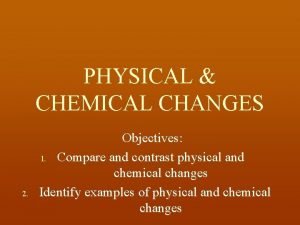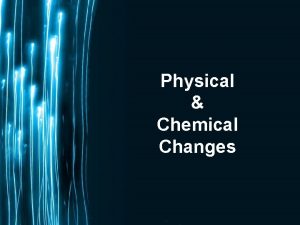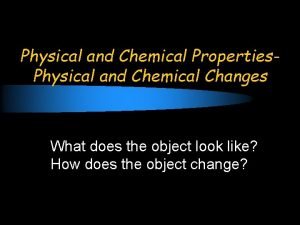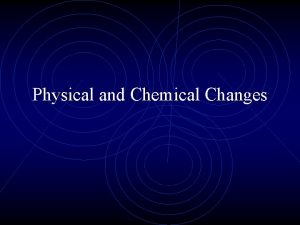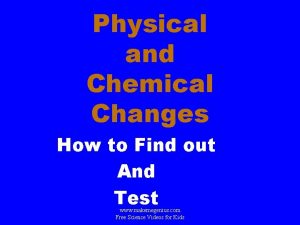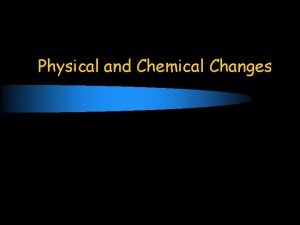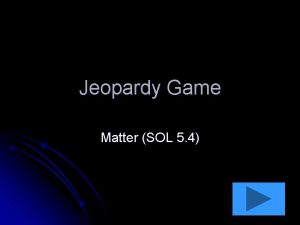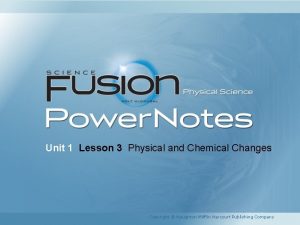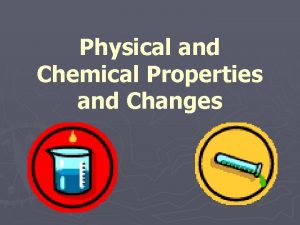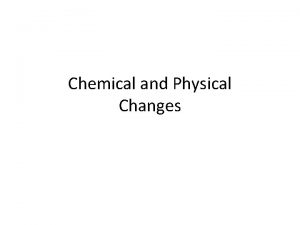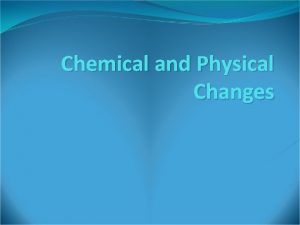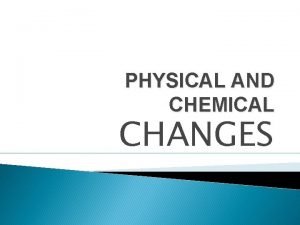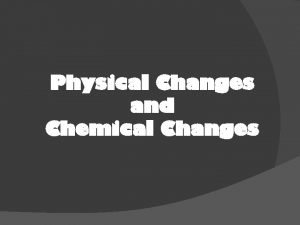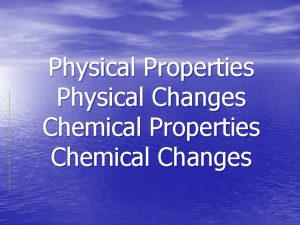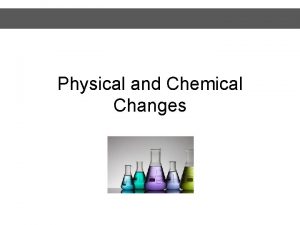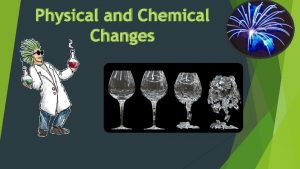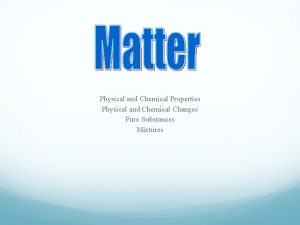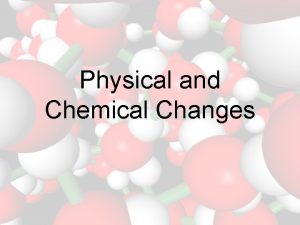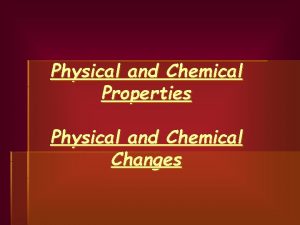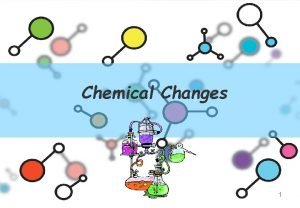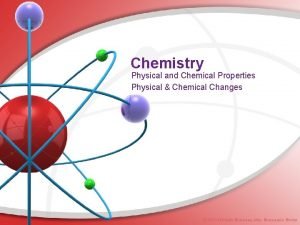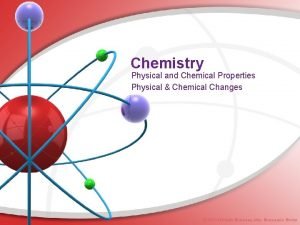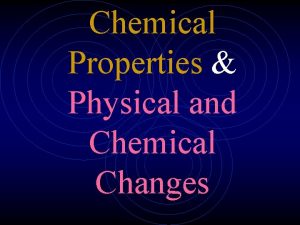Physical and Chemical Changes 1 7 Physical Changes




















- Slides: 20

Physical and Chemical Changes 1. 7

Physical Changes • Physical Change: the substance involved remains the same, even though it may change state or form. • Examples: • Dissolving – stirring a spoonful of sugar in water • Melting –an ice cube melts • Freezing – dripping warm chocolate onto ice cream hardens • Most physical changes are easy to reverse (but not all!)

Physical Changes Video

Chemical Changes • Chemical Change: The original substance is changed into one or more different substances that have different properties. • Examples: • Burning – a campfire • Cooking - baking a cake, frying an egg • Rusting - old truck, nail left on the ground • Chemical changes are very difficult to reverse.

Clues that a Chemical Change has Occurred 1. A new substance has formed 2. A new color appears 3. Energy (heat or light) is given off 4. Bubbles of gas are given off (new substance being formed) 5. A precipitate (a solid material formed inside a solution) forms 6. The change is difficult to reverse

Sample Chemical Changes (Always involve the production of a new substance) Ex. 1: H 2 gas + O 2 gas Reactants: Left side H 2 O liquid (water) Products: Right side Ex. 2: C + O 2 CO 2 (carbon dioxide) Ex. 3: C + H 2 + O 2 C 6 H 12 O 6 (sugar) C + H 2 C 3 H 8 (Propane) Ex. 4:

Chemical Changes Video

Determine whether each of the following images represents a physical change or a chemical change

Burning

Melting

Sharpening Your Pencil

Cooking Breakfast

Cutting an apple?

Fireworks

Assignment • Worksheets • Read Pages 28 – 30 of the textbook and answer questions 1 -4 • Challenge Question Identify physical and chemical changes that are useful to us. Provide three example of how these changes are needed or beneficial.

1. Explain how a physical change differs from a chemical change. Chemical changes involve production of a new substance with new properties. No new substances are produced in physical changes.

2. a) Garbage rotting chemical b) Cutting up carrots physical c) A silver spoon turning black chemical d) Making tea from tea leaves physical e) Bleaching a stain chemical f) Boiling an egg chemical

Question 3 and 4 3. Changes occur more quickly at high temperatures. Putting candles together tends to concentrate heat more and the candles will be at a higher temperature. 4. Evaporation, mixing, and condensation are physical changes. Combustion, catalytic conversion and rusting are chemical changes


 Sample of chemical changes
Sample of chemical changes Compare and contrast physical and chemical changes
Compare and contrast physical and chemical changes Chemical reactions section 1 chemical changes
Chemical reactions section 1 chemical changes Physical change
Physical change Physical and chemical changes
Physical and chemical changes Physical and chemical changes
Physical and chemical changes Physical and chemical changes generation genius
Physical and chemical changes generation genius Physical and chemical changes
Physical and chemical changes Physical change and chemical change
Physical change and chemical change Whats the difference between chemical and physical change
Whats the difference between chemical and physical change Which is true about chemical change
Which is true about chemical change Whats a chemical change
Whats a chemical change Physical and chemical changes jeopardy
Physical and chemical changes jeopardy Chemical change baking
Chemical change baking Physical change examples
Physical change examples Physical changes lesson 3 outline
Physical changes lesson 3 outline True or false: chemical and physical changes alter matter.
True or false: chemical and physical changes alter matter. Lesson outline lesson 1 solids liquids and gases answer key
Lesson outline lesson 1 solids liquids and gases answer key Physical/chemical changes & properties color by number
Physical/chemical changes & properties color by number A bicycle changes color as it rusts physical or chemical
A bicycle changes color as it rusts physical or chemical Chemical properties and changes lesson 4
Chemical properties and changes lesson 4

